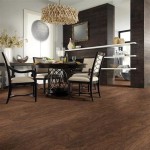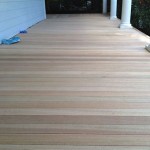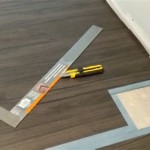Underlay for Engineered Wood Flooring with Underfloor Heating
Engineered wood flooring offers a compelling combination of aesthetic appeal and practical durability, making it a popular choice for both residential and commercial properties. When coupled with underfloor heating (UFH) systems, it provides a luxurious and energy-efficient method of warming interior spaces. However, the successful integration of these two systems hinges significantly on the selection of a suitable underlay. The underlay acts as a crucial interface, impacting thermal performance, acoustic insulation, and the overall longevity of the flooring installation. Understanding the properties and requirements of underlay specifically designed for engineered wood over UFH is paramount for achieving optimal results.
The primary function of underfloor heating is to radiate heat evenly throughout a room, creating a comfortable and consistent temperature. Traditional insulation materials, commonly used in standard flooring installations, often act as barriers to this heat transfer, rendering the UFH system inefficient. Therefore, selecting an underlay with a low thermal resistance is critical. Thermal resistance, often measured in R-value or TOG rating, indicates the material’s ability to impede heat flow. A lower R-value signifies less resistance, allowing heat from the UFH to pass through the flooring more readily and efficiently.
Furthermore, the underlay must possess properties that protect the engineered wood flooring from potential damage. Fluctuations in temperature and moisture levels, inherent in UFH systems, can stress the wood, leading to warping, cracking, or delamination. A suitable underlay can mitigate these risks by providing a stable and cushioned base, absorbing minor movements and preventing direct contact between the flooring and the subfloor. This is particularly important with engineered wood, which, although more stable than solid wood, remains susceptible to environmental influences.
The installation process itself can also be significantly affected by the choice of underlay. Some underlay materials are easier to cut and install than others, impacting labor costs and project timelines. Additionally, the underlay's ability to conform to minor imperfections in the subfloor can simplify preparation and ensure a smooth, level surface for the engineered wood. This is crucial for achieving a professional-looking and long-lasting installation.
Thermal Conductivity and R-Value
Thermal conductivity and R-value are key metrics for evaluating underlay suitable for use with underfloor heating. Thermal conductivity, typically expressed in W/mK (Watts per meter Kelvin), describes the material's ability to conduct heat. A higher thermal conductivity indicates that the material more readily allows heat to pass through it. Conversely, R-value, expressed in m²K/W (square meters Kelvin per Watt), represents the thermal resistance. As mentioned earlier, a lower R-value is preferred for UFH applications.
When selecting an underlay, it is crucial to consult the manufacturer's specifications for both thermal conductivity and R-value. These values should be presented in clear and verifiable data sheets. It is also important to understand how these values were determined. Standardized testing methods, such as those outlined by international organizations like the ISO, ensure consistent and reliable comparisons between different underlay products. Independent testing and certification can further validate the manufacturer's claims.
For engineered wood flooring with UFH, an underlay with an R-value of 0.75 TOG (Thermal Overall Grade) or lower is generally recommended. However, the optimal R-value may vary depending on several factors, including the type of UFH system (e.g., water-based or electric), the desired room temperature, and the insulation properties of the building itself. Consulting with a qualified UFH installer or flooring specialist is advisable to determine the most appropriate underlay for a specific project.
In addition to the R-value, the thickness of the underlay can impact its thermal performance. While a thicker underlay might offer better sound insulation and cushioning, it can also increase the overall thermal resistance. Therefore, a balance must be struck between thermal efficiency and other desired properties. Thin, high-density underlays often provide a good compromise, offering low thermal resistance without sacrificing essential cushioning and support.
Moisture Resistance and Vapor Permeability
Underfloor heating systems can introduce moisture-related challenges that can negatively affect engineered wood flooring. The constant cycling of temperatures can increase humidity levels within the subfloor and surrounding areas. This increased moisture can lead to expansion and contraction of the wood, potentially causing warping, cupping, or gapping. Therefore, the underlay's ability to resist moisture and manage vapor permeability is crucial for maintaining the integrity of the flooring.
A moisture-resistant underlay will prevent moisture from the subfloor from migrating upwards into the engineered wood. This barrier helps to protect the wood from direct contact with moisture, reducing the risk of swelling and related damage. Some underlay materials incorporate a built-in vapor barrier, typically a thin layer of impermeable film, to provide an additional level of protection. If the subfloor is known to have high moisture levels, a separate vapor barrier may be required even with a moisture-resistant underlay.
Vapor permeability, also known as moisture vapor transmission rate (MVTR), measures the rate at which water vapor can pass through a material. An underlay with low vapor permeability will restrict the movement of moisture vapor, preventing it from reaching the engineered wood. However, some degree of vapor permeability can be beneficial, allowing the wood to breathe and preventing the buildup of trapped moisture underneath the flooring. This is particularly important in environments with fluctuating humidity levels.
The ideal balance between moisture resistance and vapor permeability will depend on the specific conditions of the installation site. Factors such as the subfloor material, the local climate, and the presence of any potential moisture sources should be considered. Consulting with a flooring professional or underlay manufacturer can help determine the most appropriate underlay for addressing moisture-related concerns.
Acoustic Performance and Impact Sound Reduction
While thermal performance and moisture resistance are paramount considerations for underlay used with underfloor heating, acoustic performance should not be overlooked. Engineered wood flooring, particularly when installed over a hard subfloor, can generate impact noise, such as footfalls and dropped objects. This noise can travel through the structure of the building, disturbing occupants in adjacent rooms or floors. An underlay with good acoustic insulation properties can significantly reduce impact noise, creating a more comfortable and peaceful environment.
Impact sound reduction is typically measured using a single number rating known as ΔLw (delta Lw). This value represents the improvement in impact sound insulation provided by the underlay, measured in decibels (dB). A higher ΔLw value indicates a greater reduction in impact noise. Building regulations in many regions specify minimum ΔLw requirements for flooring installations, particularly in multi-story buildings or apartments.
Some underlay materials are specifically designed to provide exceptional acoustic performance. These materials often incorporate dense, resilient layers that effectively absorb and dampen sound vibrations. However, it is important to note that acoustic performance can be influenced by several factors, including the thickness and density of the underlay, the subfloor material, and the overall construction of the building.
When selecting an underlay for acoustic performance, it is crucial to review the manufacturer's test data and ensure that the product meets the required ΔLw values. Independent testing and certification can provide assurance of the underlay's acoustic performance. It is also advisable to consider the specific noise concerns of the installation site. For example, if impact noise is a primary concern, an underlay with a high ΔLw value should be selected. If airborne noise is also a concern, additional soundproofing measures may be necessary.
In summary, choosing the correct underlay for engineered wood flooring over underfloor heating involves careful consideration of several crucial factors. These include thermal conductivity and R-value, moisture resistance and vapor permeability, and acoustic performance. Balancing these properties to suit the specific requirements of the installation site is essential for achieving optimal performance, longevity, and comfort. Consulting with qualified professionals, reviewing manufacturer specifications, and considering independent test data are all important steps in the selection process.

Heat Therm Underlay For Underfloor Heating Ewa3

Underlay For Underfloor Heating Laminate Or Carpet

Install Underfloor Heating Under Wood Floor Discount Flooring Depotdiscount Depot Blog

Thermo Pro X Underfloor Heating Underlays British Flooring

Thermo X Ufh Vinyl Laminate Wood Flooring Underlay 1 8mm

Underlay For Underfloor Heating Laminate Or Carpet

Underlay Insulation For Electric Laminate Heating

Guide To Choosing The Best Flooring For Underfloor Heating Exterior Solutions

Foil Underfloor Heating Bn Thermic

Install Wood Floors On Underfloor Heating Kährs
Related Posts








